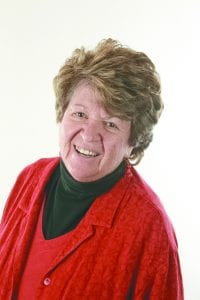By Julianne Mosher
A new documentary created by a former producer for ABC News and 60 Minutes, and with the help of different EMS groups across New York State, is heading to Port Jefferson next week for a free viewing of a powerful film that will remind people how important rescue services are.
Michael Presta, deputy chief at Port Jefferson EMS, said he received a LinkedIn message from the film’s director and producer, Bryony Gilbey, asking if her 2023 award-winning documentary, Honorable But Broken: EMS in Crisis, could be shown in the area.

After connecting with the Greater Port Jefferson Arts Council and Theatre Three, Presta was able to help get the film to play on Thursday, July 11 at 6 p.m. — for free — and for the first time on Long Island.
Gilbey, whose three children are EMS workers, developed the film after hearing the stories about what it was like being in emergency services pre, during and post COVID-19, plus the lack of funding these operations receive from the state and federal governments. The documentary was shot on location with EMS crews in Ossining, New York, and Montclair, New Jersey.
“The film has been circling the state for about a year now and it shows the challenges of delivering EMS services to the public,” Presta said, adding that local elected officials have been invited to attend.
“It helps paint a picture to the public and our politicians on what delivering EMS services in 2024 is like,” Presta added.
He noted that the Port Jefferson EMS helps and protects all of Port Jefferson and its surrounding communities including Mount Sinai and the Village of Port Jefferson, while also lending support to other local areas.
When Presta started his career in Port Jefferson almost two decades ago, on average there were less than 1,000 calls per year. Now, he said, they’re around 3,500.
“It’s getting harder with rising costs to deliver EMS, not just here, but everywhere. Funding is needed to support that number of calls,” he said. “This movie will give people insight.”
Narrated by Sarah Jessica Parker, the goal of the documentary is to, “raise awareness of the systemic collapse of EMS and to advocate for change. Shockingly, most states don’t mandate the provision of EMS, so funding is unpredictable and inadequate. There is a critical workforce shortage, particularly in rural areas, which in turn has led to much longer response times.”
The goal, the documentary’s official website says, is to eventually get the film onto a streaming service so everyone can see it. On the film’s official website, people can donate to help fund that endeavor, as well.
And while Honorable But Broken is not part of the Port Jefferson Documentary Series, Kelly DeVine, head programmer of the series, said that when Presta approached her and Allan Varela, president of the Greater Port Jefferson Arts Council, looking for help, both groups jumped to volunteer their resources.
Working alongside Theatre Three, the arts council offered to lend the theatre their personal movie screen so that the film could be played at the venue.
“The Port Jefferson Documentary Series is focused on bringing high-quality films normally only seen at top festivals or art house screens to our audiences and curating those titles to support our community partners and create impactful communal experiences,” DeVine said.
As for other films coming to Port Jefferson, the documentary series is moving to a new venue and day of the week. The Methodist Church on Main Street across from Theatre Three will now show its films on Thursdays starting in September.
Theatre Three is located at 412 Main Street in Port Jefferson. The screening is free and no reservations are required. For more information, call 631-928-9100.
For more information on Honorable But Broken: EMS in Crisis, visit www.honorablebutbroken.org.























